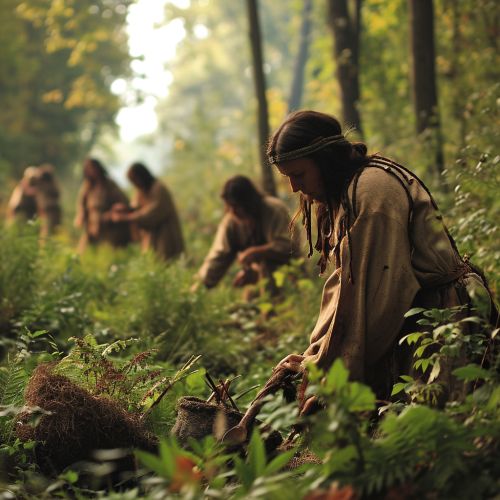Hunter-gatherer
Introduction
Hunter-gatherers are human beings who sustain themselves through the combined practices of hunting wildlife and gathering plant-based foods. This way of life, prevalent before the advent of agriculture, represents the earliest form of human subsistence. Hunter-gatherer societies are often mobile, moving to new areas as resources become depleted.


Evolutionary Background
Hunter-gatherer societies emerged during the Paleolithic era, a period that began over 2.5 million years ago with the advent of human tool use. During this era, humans developed increasingly sophisticated stone tools and strategies for hunting and gathering, which enabled them to exploit a wide range of environments.
Social Structure
The social structure of hunter-gatherer societies is often egalitarian, with no fixed hierarchies or classes. Leadership roles are typically temporary and based on individual skills rather than inherited status. Many hunter-gatherer societies are organized into bands, small groups of related individuals who live and work together.
Economic System
The economic system of hunter-gatherer societies is based on the direct procurement of resources from the environment. This system, known as a gift economy, is characterized by the sharing of resources and the absence of formal trade.
Diet
The diet of hunter-gatherer societies is diverse and depends on the available resources in their environment. It typically includes a mix of meat from hunted animals and plant-based foods gathered from the wild.
Transition to Agriculture
The transition from hunter-gatherer societies to agricultural societies, known as the Neolithic Revolution, began around 10,000 years ago. This transition was marked by the domestication of plants and animals, which led to the development of permanent settlements and the rise of civilization.
Contemporary Hunter-Gatherer Societies
Despite the global spread of agriculture and industrialization, some hunter-gatherer societies persist in the modern world. These societies, such as the San people of Southern Africa and the Inuit of the Arctic, continue to practice hunting and gathering as a primary means of subsistence.
